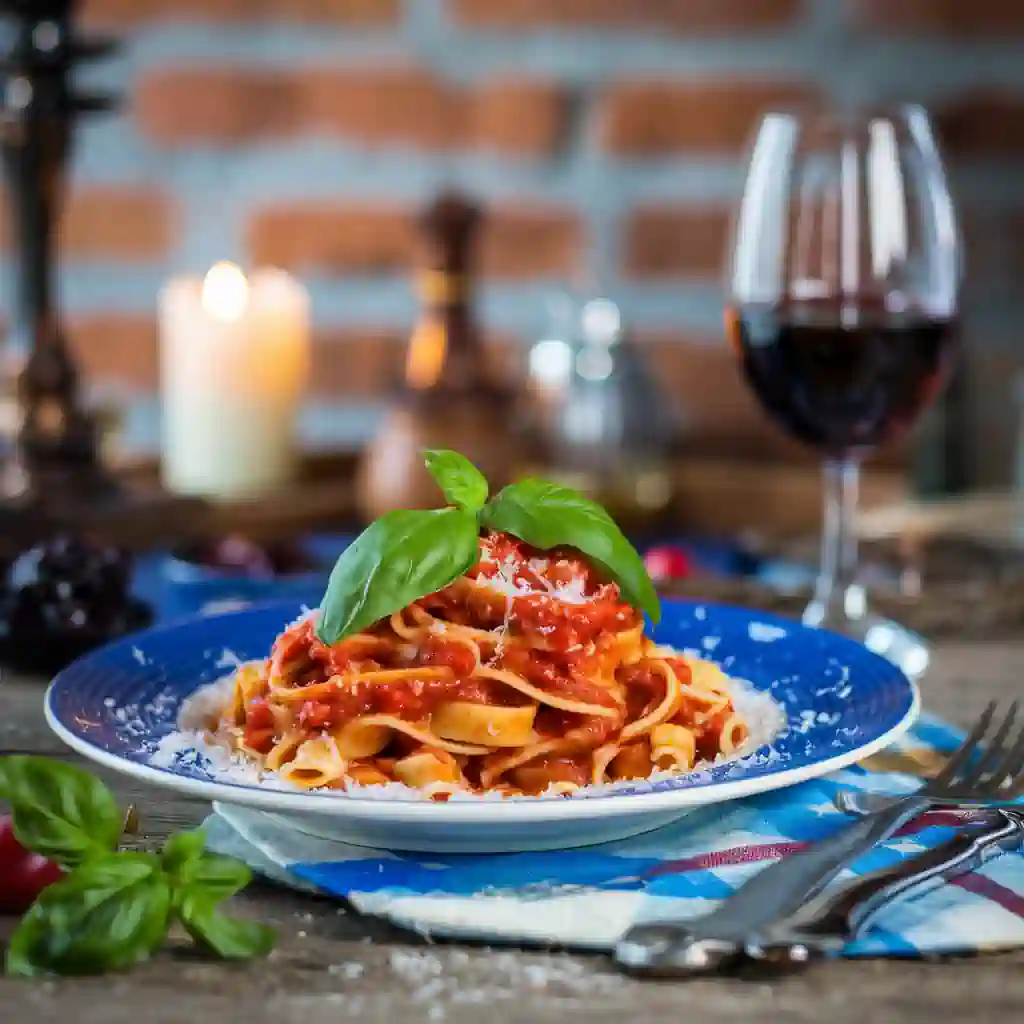Introduction
Calabrian ‘nduja is a spicy, spreadable sausage hailing from Calabria, a sun-drenched region in southern Italy renowned for its bold flavors and fiery cuisine. This delicacy is more than just a spread—it’s a symbol of Calabria’s culinary history, a versatile ingredient in both traditional and modern recipes, and a rising star on gourmet menus worldwide.
In this guide, we’ll delve into the origins of Calabrian ‘nduja, explore its production process, discover creative culinary applications, and address common misconceptions. Whether you’re a seasoned food enthusiast or simply curious about this unique salumi, there’s something here for you.
Table of Contents
What is Nduja?
The Origin and History of Nduja
You might not know it, but nduja has humble beginnings. This fiery delicacy comes straight from Spilinga, a small Calabrian village where farmers used every last bit of the pig to create rich, flavorful spreads. Dating back to the 19th century, nduja was born from a combination of pork fat, scraps, and lots of Calabrian chili peppers, a staple of the region’s cuisine.
Unlike your typical cured meats, nduja’s beauty lies in its soft, almost creamy texture—perfect for spreading on warm bread or melting into sauces. Over time, this once-rustic creation evolved into a symbol of Calabrian food culture, treasured not just for its bold taste but for the ingenuity behind it.
What Makes Nduja Unique Among Italian Salumi?
Sure, Italy’s packed with iconic cured meats—prosciutto, soppressata, pancetta—but nduja stands out. Why? Because it’s spreadable. While most Italian salumi are firm and sliced, nduja stays soft thanks to its high fat-to-meat ratio and the careful balance of fermentation and curing.
The real kicker, though, is the Calabrian chili—the heart and soul of nduja. These local chilies don’t just bring heat—they add a smoky, fruity complexity that makes every bite unforgettable. Combined with rich pork, nduja hits that perfect balance of spicy, savory, and umami.
Whether you spread it on crusty bread, melt it into a sauce, or spoon it over pizza, nduja delivers a flavor explosion that’s both unmistakable and addictive
if you’re interested in more Italian-inspired content, you might enjoy their bruschetta recipes and tips, which pair beautifully with nduja.
Traditional Ingredients and How Nduja is Made
Key Ingredients in Authentic Nduja
At the heart of nduja’s bold personality lies a short list of simple yet essential ingredients. The core elements include pork, fat, and fiery Calabrian chilies—the lifeblood of this iconic spreadable sausage.
To create the signature soft, spreadable texture, nduja relies on a high fat-to-meat ratio, often using pork shoulder, belly, and jowl—cuts known for their rich marbling. The star player, though, is the Calabrian chili, which brings not just heat, but a fruity, smoky complexity that defines nduja’s unique flavor.
To round things out, salt and occasionally spices are added, though the simplicity of the ingredient list is part of what makes nduja so special. The quality of each ingredient matters—there’s no room for shortcuts if you want authentic flavor.
Production Process: From Pork to Spreadable Salume
Making nduja is equal parts art and science. First, the pork and fat are finely ground, creating a smooth, even paste. Next, the Calabrian chilies are blended in, infusing the meat with their bold heat and rich color.
Once seasoned, the mixture is stuffed into natural casings, typically large intestines, which allow for optimal aging. Nduja undergoes a slow fermentation and curing process, often hanging for weeks or even months in temperature-controlled rooms, where natural molds contribute to its complex flavor.
What emerges is a sausage unlike any other—soft, smoky, spicy, and utterly addictive. Whether enjoyed spread on warm bread or stirred into pasta sauces, nduja brings authentic Italian flavor to every dish.
How to Use Nduja in Cooking

Classic Italian Dishes Featuring Nduja
In traditional Calabrian kitchens, nduja has always been a flavor powerhouse, transforming humble ingredients into memorable dishes. One of the simplest ways to enjoy it is spread on grilled bread, where its fiery kick meets the smoky crunch of toasted crust.
Another classic? Pasta with nduja and tomatoes. Just a spoonful of nduja melted into a rich tomato sauce adds depth, spice, and a satisfying umami punch. It’s Calabrian comfort food at its best.
You’ll also find nduja used to enhance stews, sauces, and even pizza toppings, where it melts beautifully and infuses every bite with spicy goodness.
Creative Ways to Use Nduja Beyond Traditional Recipes

Beyond Italian staples, nduja is a secret weapon for chefs and home cooks who love to experiment. Stir a dab into creamy risotto for a spicy twist, or fold it into butter and slather it over grilled steak.
You can even add a spoonful to scrambled eggs or omelets, where the heat balances the richness of the eggs. Nduja works surprisingly well with seafood too—try dotting it on seared scallops or whisking it into a vinaigrette for grilled shrimp.
Tips for Balancing Nduja’s Bold Flavor
Because nduja is so spicy and rich, a little goes a long way. To tame the heat, pair it with creamy elements like burrata, mascarpone, or ricotta. Fresh herbs, like parsley and basil, also help brighten up dishes.
Whether you stick with traditional Calabrian recipes or get creative in the kitchen, nduja adds excitement and complexity to every dish it touches.
Nduja vs. Other Spicy Sausages
Is Nduja the Same as Chorizo? Key Differences Explained
Although nduja and chorizo might look similar at first glance—both are pork-based, spicy, and used in a wide range of dishes—they’re actually quite different.
Chorizo, whether Spanish or Mexican, typically comes in firm, sliceable forms, while nduja is soft and spreadable, thanks to its higher fat content. Also, nduja’s signature heat and smoky flavor comes from Calabrian chilies, while chorizo gets its kick from Spanish paprika or fresh chilies, depending on the style.
Another key distinction? Nduja is fermented and cured, but it’s often enjoyed spread over bread or melted into sauces, rather than being sliced and eaten as-is like chorizo.
Comparing Nduja to Sobrasada and Other Spreadable Meats
If there’s a closer cousin to nduja, it’s sobrasada, a spreadable sausage from the Balearic Islands of Spain. Like nduja, sobrasada is soft, spicy, and made with pork, but the flavor profile leans smokier and less fiery due to Spanish paprika rather than Calabrian chilies.
Among French charcuterie, there’s no direct equivalent to nduja, although rillettes share the spreadable texture, but lack the bold spice and tang.
For more delicious Italian-inspired recipes, check out Calzone some even pair beautifully with nduja.
Where to Buy and How to Store Nduja
Where to Buy Authentic Nduja
Finding authentic nduja outside of Italy used to be a challenge, but luckily, artisan producers and online gourmet shops have made this spicy delicacy more accessible.
For the best flavor, look for nduja imported directly from Calabria, particularly from Spilinga, the birthplace of nduja. Many Italian delis, specialty cheese shops, and even some upscale supermarkets now carry nduja.
When shopping online, stick to retailers that specialize in Italian meats and regional specialties. Authentic nduja should list pork, fat, Calabrian chilies, and salt as its primary ingredients—anything else might be a watered-down version.
Best Ways to Store Nduja After Opening
Since nduja is spreadable and high in fat, proper storage keeps it fresh and flavorful. After opening, wrap it tightly in plastic wrap or store it in an airtight container. Keeping it in the refrigerator helps preserve its texture and vibrant color.
If you don’t plan to use all your nduja right away, freezing works too—just portion it into small amounts, so you only defrost what you need.
For more mouthwatering recipes featuring other Italian ingredients, check out the Panna Cotta
FAQs About Nduja
Is Nduja the Same as Chorizo?
No, nduja and chorizo are quite different, even though they’re both spicy, pork-based sausages. The biggest difference lies in texture. While chorizo is usually firm and sliceable, nduja is soft, spreadable, and creamy, making it much more versatile in the kitchen.
Another key difference is the source of their heat. Nduja gets its spicy kick from Calabrian chilies, while Spanish chorizo relies heavily on paprika. Plus, nduja is often spread on bread or melted into sauces, unlike chorizo, which is usually eaten in slices or diced into dishes.
How is Nduja Pronounced?
The correct pronunciation of nduja might surprise you. It’s said as “en-DOO-ya.” That silent “N” at the start often trips up English speakers, but once you say it a few times, it rolls off the tongue.
What Does Nduja Taste Like?
Simply put, nduja is a flavor bomb. It’s spicy, smoky, tangy, and rich, all at once. Thanks to the Calabrian chilies, there’s a deep peppery heat, but the pork fat mellows it out, giving you a smooth, almost buttery texture with umami depth.
This unique balance of heat, fat, and fermented tang makes nduja stand out from almost any other sausage or spread.
Can You Eat Nduja Raw?
Yes, you can absolutely eat nduja without cooking it—after all, it’s already cured and fermented. Many Italians enjoy nduja simply spread on warm bread, letting the heat of the bread soften it even more.
That said, nduja also works wonderfully cooked, especially when melted into pasta sauces, soups, or even pizza toppings. Whether raw or cooked, nduja delivers its signature spicy punch in every bite.
Conclusion
Few ingredients capture the soul of Calabria quite like nduja. Its unique combination of spice, fat, and rich pork flavor has earned it a place not only in Italian kitchens, but also on tables around the world. Whether you’re spreading it on crusty bread, stirring it into sauces, or even pairing it with seafood, nduja brings a burst of bold flavor every time.
For anyone craving authentic Italian heat, nduja is a must-try delicacy. Keep some in your fridge and you’ll always have a little taste of Calabria ready to brighten up your next meal.

